Stay in touch with the latest news.
![The Living Architecture Seminar concluded with a networking reception at SIUE’s Fixin’s Restaurant, which overlooks the University’s garden roof.]() The Southern Illinois University Edwardsville Living Architecture Regional Center of Excellence (LARCE) hosted researchers, inventors and industry advancers on Monday, Sept. 23 for the Midwest Regional Green Infrastructure Symposium.
The Southern Illinois University Edwardsville Living Architecture Regional Center of Excellence (LARCE) hosted researchers, inventors and industry advancers on Monday, Sept. 23 for the Midwest Regional Green Infrastructure Symposium.
The one-day event featured a Living Architecture Seminar with presentations and panel discussions on topics of policy advocacy, maintenance challenges and best practices, cost-effectiveness, funding, incentives, and eligibilities, along with research advancements.
“This event offered the perfect opportunity to exchange ideas intellectually at the university level, and allowed us to collaborate with experts from Ohio, Missouri, Kansas and Illinois whose various markets have different strategies for living architecture,” said Bill Retzlaff, PhD, distinguished research professor of biological sciences and associate dean in the College of Arts and Sciences. “We’ve been fortunate to work with great collaborators with shared interest in living architecture, not only from the standpoint of implementing it, but also to provide opportunities for our students to learn about new technologies.”
In 2004, SIUE launched the Green Roof Environmental Evaluation Network (G.R.E.E.N.), a St. Louis metropolitan area research collaboration among the University and regional and local industries. In 2018, SIUE became one of four education institutions in the nation to receive the honorable LARCE designation from Green Roofs for Healthy Cities (GRHC), and its charitable arm, the Green Infrastructure Foundation (GIF).
SIUE’s LARCE will advance the work of G.R.E.E.N. under the director of Retzlaff, Susan Morgan, PhD, professor of civil engineering and associate dean in the SIUE Graduate School, and Serdar Celik, PhD, professor in the School of Engineering’s Department of Mechanical Engineering.
![Among those presenting at the Living Architecture Seminar were SIUE’s (L-R) Bill Retzlaff, Serdar Celik and Susan Morgan.]() SIUE teacher-scholars have produced a significant body of work evaluating living architecture systems in areas such as volume and quality of storm water runoff, plant performance, maintenance issues, biodiversity, thermal characteristics, weight loads, wind uplift and new green roof technologies. Approximately 150 student researchers, including 24 who have completed master’s theses, have worked on living architecture projects.
SIUE teacher-scholars have produced a significant body of work evaluating living architecture systems in areas such as volume and quality of storm water runoff, plant performance, maintenance issues, biodiversity, thermal characteristics, weight loads, wind uplift and new green roof technologies. Approximately 150 student researchers, including 24 who have completed master’s theses, have worked on living architecture projects.
“SIUE has been doing fantastic research on the performance of green roof systems, including interesting multidisciplinary studies that involve multiple engineering disciplines and plant sciences,” said Steven Peck, founder and president of GRHC North America and executive director of the GIF. “It was wonderful to see a wide variety of green infrastructure experts in attendance who came to network, and be involved in cross-academic fertilization that will hopefully lead to more funding for and recognition about this important work.”
The Symposium marked the Center’s first regional conference. Coordinators plan to host such an event annually or biennially.
“Our goal is to get more students involved, bring in practitioners from the private sector, and work with academics to advance the development of new systems, understand their performance and engage policy makers, so that we can create a flourishing job market for future graduates,” Peck noted.
“SIUE has been producing amazing work on green roofs and walls for a long time, and this symposium underscores their notoriety and excellence as a regional center,” added Reid Coffman, associate professor at Kent State University, executive director of the Greater Ohio LARCE and North American research chair for Green Roofs for Healthy Cities. “Research is critical, as it’s helped launch green roofs, walls and a lot of living architecture. The significance now lies in students becoming involved in greater numbers and great diversities of interest areas. Then, they can address research questions and take their findings out into the world to build, maintain and construct systems, and build policy around the systems, so that our cities are better places to live.”
Two of the seminar’s featured presenters have been longtime collaborators with SIUE, helping develop portions of the University’s six green roofs and two living architecture research areas.
Kelly Luckett, with Green Roof Blocks, spoke about the importance of maintaining green roofs, sharing examples of his projects over time and insights into the future of the green roof industry. For example, he noted his company has advanced its efforts by using pre-grown sedum tiles vs. sedum plugs. This change has led to faster growth establishment and decreased maintenance.
Luckett partnered with SIUE 10 years ago for the installment of the green roof on the Student Success Center. “That was a rewarding project, because students were involved,” Luckett recalled. “It was a merger of our commercial endeavor with SIUE’s educational mission, and that relationship has continued. We’re continuously asking new research questions and publishing our findings for the benefit of the industry.”
Mark Woolbright, of Greenwall Ventures, also spoke about “The “M” Word:” maintenance. As an inventor and innovator of vertical living walls, he shared his passion for the visual amenities that have such extensive positive impacts. Woolbright designed the living wall research plot located outside Bluff Hall that has contributed to multiple SIUE research studies.
Woolbright noted some of living walls’ positive impact involving earth retention, habitat, urban cooling, decreased storm water runoff, improved air quality, greenspace and carbon sequestration.
“Plants have always fascinated me, and I think they add a great deal to the built environment,” Woolbright said. “Humans are embracing plants in their environment like never before. Living walls come in many forms and service capacities. They’re about bringing plants in close proximity to humans for a number of benefits, in terms of worker productivity, health, mental wellness, stress reduction, better test scores and more. These are no longer being overlooked.”
For more information on G.R.E.E.N. and SIUE’s LARCE, visit siue.edu/green/about.
Green Roofs for Healthy Cities (GRHC) is a member supported industry association with a mission to develop the green roof and wall industry throughout North America. GRHC provides online and in-person training programs, manages the Green Roof Professional accreditation, publishes the Living Architecture Monitor, organizes events to support market development and advocates for supportive policy.
The Green Infrastructure Foundation is a charity that partners with communities to shape healthy, resilient, and sustainable places using living green infrastructure.
Photos: The Living Architecture Seminar concluded with a networking reception at SIUE’s Fixin’s Restaurant, which overlooks the University’s garden roof.
Among those presenting at the Living Architecture Seminar were SIUE’s (L-R) Bill Retzlaff, Serdar Celik and Susan Morgan.
![]()
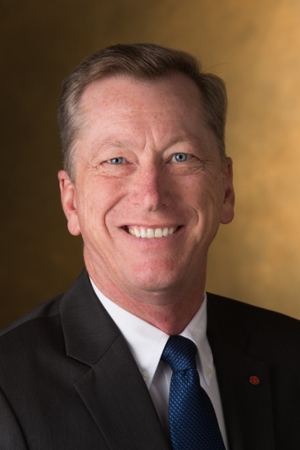 When students came to Southern Illinois University Edwardsville this fall, they discovered enhancements and renovations to a campus, already known for its attractiveness. SIUE’s campus growth this year totaled approximately $9 million, according to Vice Chancellor for Administration Rich Walker.
When students came to Southern Illinois University Edwardsville this fall, they discovered enhancements and renovations to a campus, already known for its attractiveness. SIUE’s campus growth this year totaled approximately $9 million, according to Vice Chancellor for Administration Rich Walker. 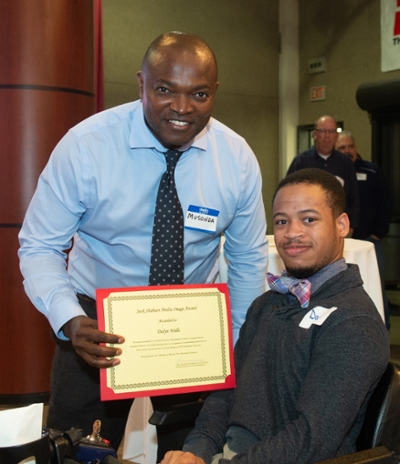 Intelligent. Communicator. Writer. African American. Southern Illinois University Edwardsville senior Dalyn Terrell Wells used these few words to describe himself. While Wells says he is grateful of being a unique individual, he delights in being part of the SIUE community, which is comprised of many diverse people.
Intelligent. Communicator. Writer. African American. Southern Illinois University Edwardsville senior Dalyn Terrell Wells used these few words to describe himself. While Wells says he is grateful of being a unique individual, he delights in being part of the SIUE community, which is comprised of many diverse people. 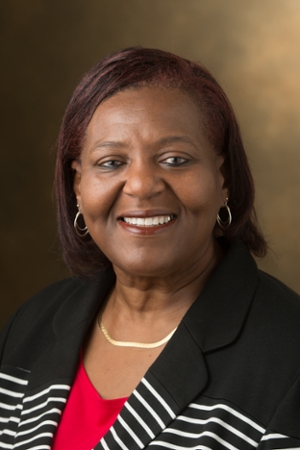 Southern Illinois University Edwardsville has received the 2019 Higher Education Excellence in Diversity (HEED) award from INSIGHT Into Diversity magazine, the oldest and largest diversity-focused publication in higher education. SIUE joins a select group of 35 institutions that have earned the distinction for six consecutive years.
Southern Illinois University Edwardsville has received the 2019 Higher Education Excellence in Diversity (HEED) award from INSIGHT Into Diversity magazine, the oldest and largest diversity-focused publication in higher education. SIUE joins a select group of 35 institutions that have earned the distinction for six consecutive years.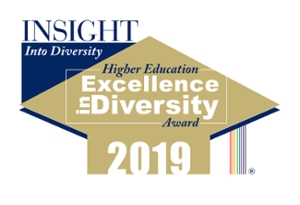 About INSIGHT Into Diversity
About INSIGHT Into Diversity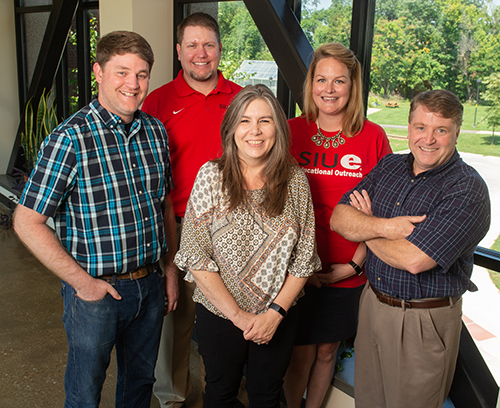 The U.S. Environmental Protection Agency (EPA) has awarded Southern Illinois University Edwardsville a $100,000 environmental education grant. The funding will support SIUE in its efforts to increase public awareness and knowledge regarding three critical clean water issues: regulated pollutants, emerging pollutants and biological contamination.
The U.S. Environmental Protection Agency (EPA) has awarded Southern Illinois University Edwardsville a $100,000 environmental education grant. The funding will support SIUE in its efforts to increase public awareness and knowledge regarding three critical clean water issues: regulated pollutants, emerging pollutants and biological contamination.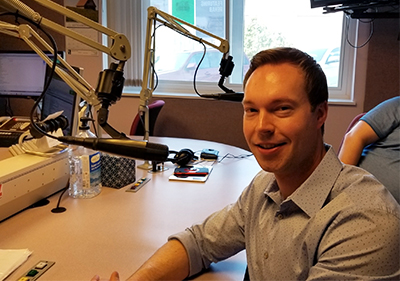 SIUE’s Jason Murphy, PhD, instructor in the School of Education, Health and Human Behavior’s Department of Psychology, was featured on WBGZ’s Let’s Talk program for a discussion on the intersection of psychology and business on Monday, Sept. 16.
SIUE’s Jason Murphy, PhD, instructor in the School of Education, Health and Human Behavior’s Department of Psychology, was featured on WBGZ’s Let’s Talk program for a discussion on the intersection of psychology and business on Monday, Sept. 16.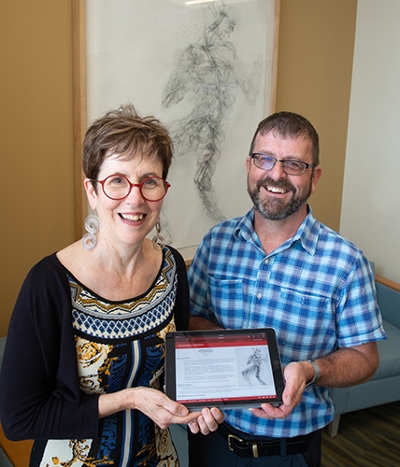 Personal curiosity inspired Southern Illinois University Edwardsville’s Dave Jennings, PhD, associate professor in the Department of Biological Sciences, to create an interactive learning application that connects science and art.
Personal curiosity inspired Southern Illinois University Edwardsville’s Dave Jennings, PhD, associate professor in the Department of Biological Sciences, to create an interactive learning application that connects science and art.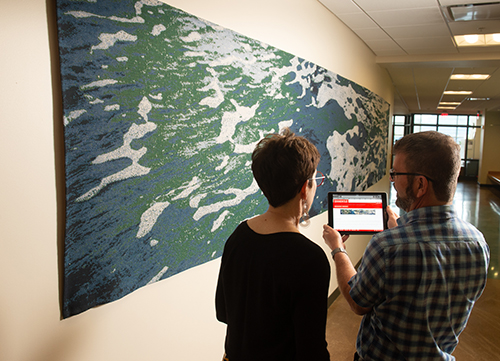 A web-based application specific for SIUE is currently in development as part of a senior project being completed by students in the School of Engineering’s Department of Computer Science. The interactive application will trigger a notification as students walk past beacons and provide information about the location, artwork or area.
A web-based application specific for SIUE is currently in development as part of a senior project being completed by students in the School of Engineering’s Department of Computer Science. The interactive application will trigger a notification as students walk past beacons and provide information about the location, artwork or area.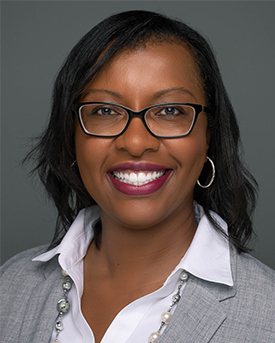 BlueCross BlueShield of Tennessee has named SIUE alumna Dalya Qualls director of corporate communications. Qualls earned a master’s in mass communications from SIUE in 2005.
BlueCross BlueShield of Tennessee has named SIUE alumna Dalya Qualls director of corporate communications. Qualls earned a master’s in mass communications from SIUE in 2005.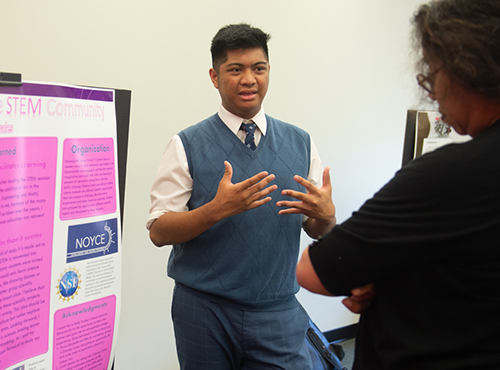 Whether aspiring to be a pediatric physician, intensive care nurse, wildlife rehabilitator, or otherwise, gaining experience in educating and communicating with young students and community members is valuable for an individual’s career preparedness.
Whether aspiring to be a pediatric physician, intensive care nurse, wildlife rehabilitator, or otherwise, gaining experience in educating and communicating with young students and community members is valuable for an individual’s career preparedness.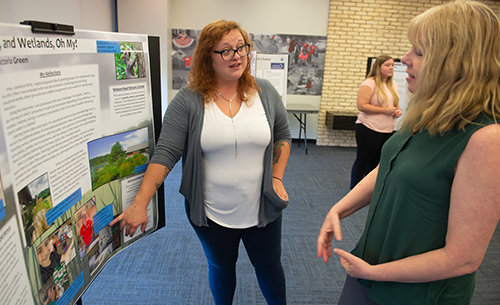 The 2019 community sites for the Noyce scholars included Edwardsville District 7’s Summer Zone, SIUE’s Odyssey Science Camp, and the Watershed Nature Center in Edwardsville.
The 2019 community sites for the Noyce scholars included Edwardsville District 7’s Summer Zone, SIUE’s Odyssey Science Camp, and the Watershed Nature Center in Edwardsville.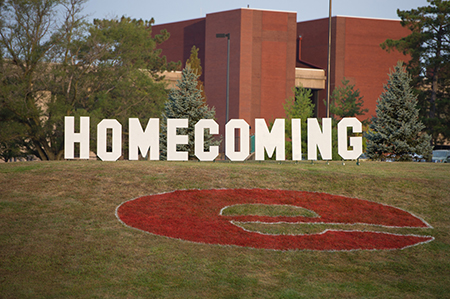 Southern Illinois University Edwardsville’s annual Homecoming celebration will take place Monday-Saturday, Sept. 23-28. The University will host a weeklong series of events for current students, alumni, faculty, staff and community members.
Southern Illinois University Edwardsville’s annual Homecoming celebration will take place Monday-Saturday, Sept. 23-28. The University will host a weeklong series of events for current students, alumni, faculty, staff and community members.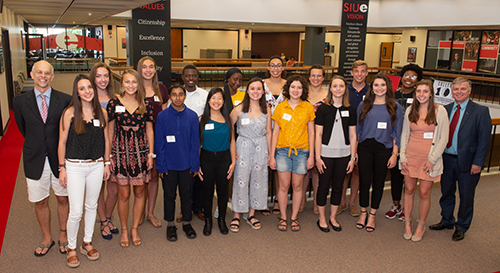 Southern Illinois University Edwardsville welcomes the newest recipients of the University’s
Southern Illinois University Edwardsville welcomes the newest recipients of the University’s  The Southern Illinois University Edwardsville School of Nursing’s Doctor of Nursing Practice Program has been ranked sixth nationally by registeredNursing.org, a nursing advocacy organization. For the complete list, visit
The Southern Illinois University Edwardsville School of Nursing’s Doctor of Nursing Practice Program has been ranked sixth nationally by registeredNursing.org, a nursing advocacy organization. For the complete list, visit 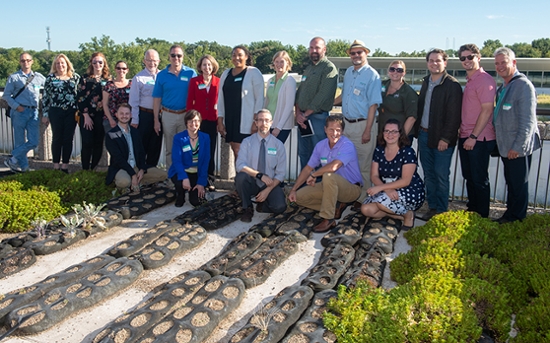 The Southern Illinois University Edwardsville Living Architecture Regional Center of Excellence (
The Southern Illinois University Edwardsville Living Architecture Regional Center of Excellence (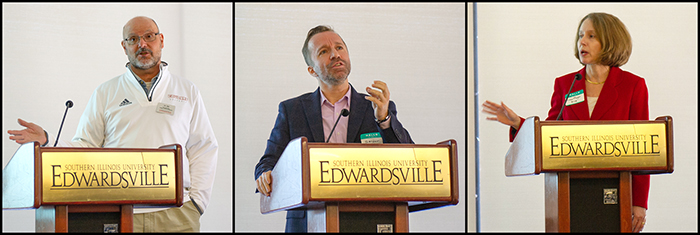 SIUE teacher-scholars have produced a significant body of work evaluating living architecture systems in areas such as volume and quality of storm water runoff, plant performance, maintenance issues, biodiversity, thermal characteristics, weight loads, wind uplift and new green roof technologies. Approximately 150 student researchers, including 24 who have completed master’s theses, have worked on living architecture projects.
SIUE teacher-scholars have produced a significant body of work evaluating living architecture systems in areas such as volume and quality of storm water runoff, plant performance, maintenance issues, biodiversity, thermal characteristics, weight loads, wind uplift and new green roof technologies. Approximately 150 student researchers, including 24 who have completed master’s theses, have worked on living architecture projects.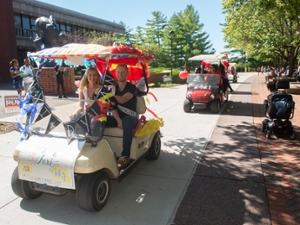 Nineteen golf carts, decorated in balloons, streamers and bedazzle, circled the Southern Illinois University Edwardsville quad and took off for other parts of the campus during the University’s annual golf cart parade on Monday, Sept. 23. The parade was part of the SIUE’s Homecoming Week events that run through Saturday, Sept. 28.
Nineteen golf carts, decorated in balloons, streamers and bedazzle, circled the Southern Illinois University Edwardsville quad and took off for other parts of the campus during the University’s annual golf cart parade on Monday, Sept. 23. The parade was part of the SIUE’s Homecoming Week events that run through Saturday, Sept. 28. 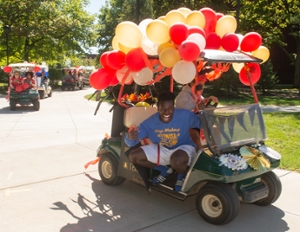 “It’s a ton of fun!” exclaimed Maddison Schneider, a junior public relations major and Homecoming Court candidate, who was riding with her Delta Phi Epsilon sisters. “Our sorority always participates in the golf cart parade.”
“It’s a ton of fun!” exclaimed Maddison Schneider, a junior public relations major and Homecoming Court candidate, who was riding with her Delta Phi Epsilon sisters. “Our sorority always participates in the golf cart parade.” 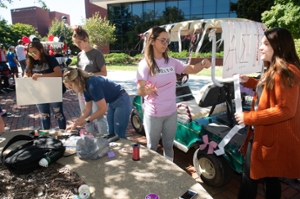 Fraternity and Sorority Organizations
Fraternity and Sorority Organizations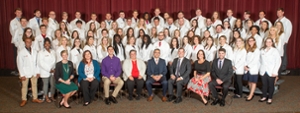 The Southern Illinois University Edwardsville School of Pharmacy (SOP) presented 74 students, comprising its class of 2023, with their professional white coats during the 15th White Coat Ceremony held Friday, Sept. 20 in the Morris University Center’s Meridian Ballroom.
The Southern Illinois University Edwardsville School of Pharmacy (SOP) presented 74 students, comprising its class of 2023, with their professional white coats during the 15th White Coat Ceremony held Friday, Sept. 20 in the Morris University Center’s Meridian Ballroom.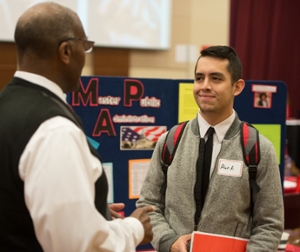 Southern Illinois University Edwardsville’s nationally-recognized Graduate School will host its annual Open House on Wednesday, Oct 16. The event will consist of two identical sessions: 11 a.m.-1 p.m. and 4:30-6:30 p.m. in the Morris University Center’s Meridian Ballroom. Register now at
Southern Illinois University Edwardsville’s nationally-recognized Graduate School will host its annual Open House on Wednesday, Oct 16. The event will consist of two identical sessions: 11 a.m.-1 p.m. and 4:30-6:30 p.m. in the Morris University Center’s Meridian Ballroom. Register now at 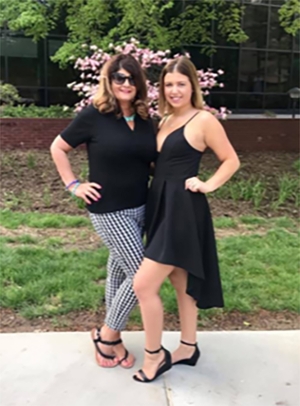 Whether it is behind the scenes or out front on stage, a mother and daughter from Collinsville are proud to call Southern Illinois University Edwardsville home and invoke their Cougar Pride, especially during SIUE Homecoming Week.
Whether it is behind the scenes or out front on stage, a mother and daughter from Collinsville are proud to call Southern Illinois University Edwardsville home and invoke their Cougar Pride, especially during SIUE Homecoming Week.  “I’m proud of Karlie,” said Clark, of her youngest of two daughters. “I want Karlie to be a leader and mentor. There are many avenues for her to take to achieve these things and being involved with SIUE homecoming is one of them.”
“I’m proud of Karlie,” said Clark, of her youngest of two daughters. “I want Karlie to be a leader and mentor. There are many avenues for her to take to achieve these things and being involved with SIUE homecoming is one of them.”  In August, The New York Times Magazine dedicated an entire issue to exploring the history of slavery and mapping the ways in which it has touched nearly every aspect of contemporary life in the U.S. To reflect upon this, the Southern Illinois University Edwardsville Black Studies Program and the Office of the Provost are presenting “1619 Commemoration” at noon each of the following days, Monday, Sept. 30-Thursday, Oct. 3 with programs in the Morris University Center (MUC) and Lovejoy Library.
In August, The New York Times Magazine dedicated an entire issue to exploring the history of slavery and mapping the ways in which it has touched nearly every aspect of contemporary life in the U.S. To reflect upon this, the Southern Illinois University Edwardsville Black Studies Program and the Office of the Provost are presenting “1619 Commemoration” at noon each of the following days, Monday, Sept. 30-Thursday, Oct. 3 with programs in the Morris University Center (MUC) and Lovejoy Library.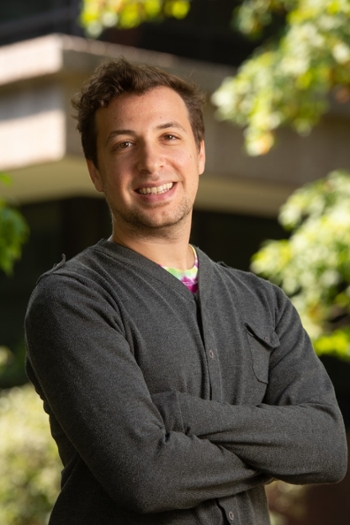 As an advocate, activist, teacher and one-time politician, Ezra Joseph Temko, PhD, Southern Illinois University Edwardsville assistant professor in the Department of Sociology, is driven by his commitment to community and desire to effect positive social change.
As an advocate, activist, teacher and one-time politician, Ezra Joseph Temko, PhD, Southern Illinois University Edwardsville assistant professor in the Department of Sociology, is driven by his commitment to community and desire to effect positive social change. 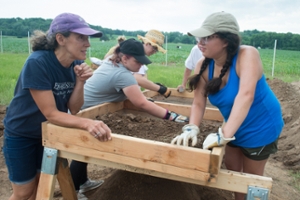 According to
According to  The Southern Illinois University Edwardsville Office of Student Affairs has received a $260,000 grant for 2019-22 from the Department of Justice (DOJ) through the Violence Against Women Act (VAWA). It is the second DOJ grant, as the University received an initial $300,000 grant in 2016.
The Southern Illinois University Edwardsville Office of Student Affairs has received a $260,000 grant for 2019-22 from the Department of Justice (DOJ) through the Violence Against Women Act (VAWA). It is the second DOJ grant, as the University received an initial $300,000 grant in 2016.